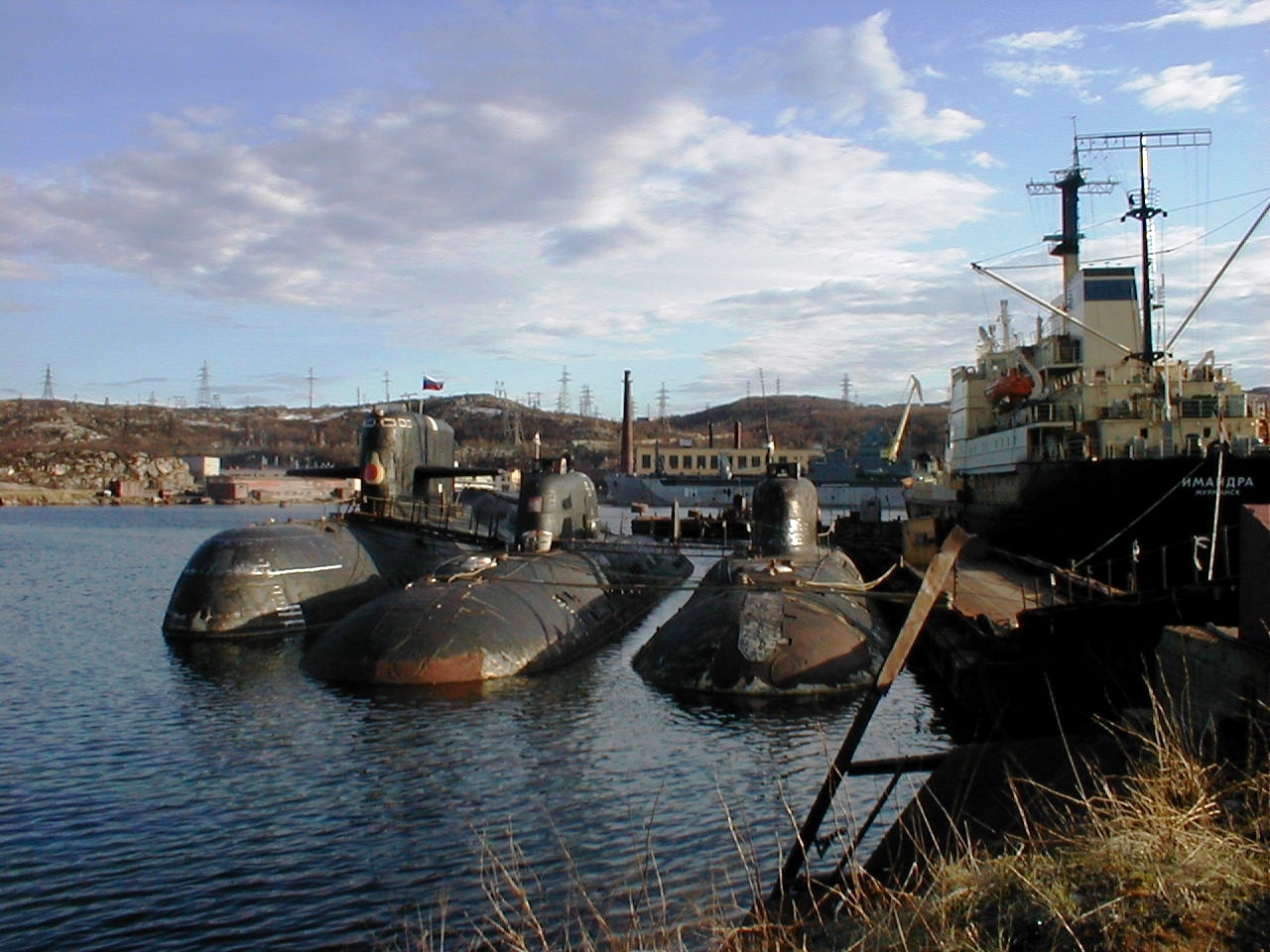Nuclear legacy
Spent nuclear fuel and radioactive waste in north-west Russia, mainly generated by the Russian Northern Fleet, present a legacy of dangerous environmental hazards on an international scale. The Barents Sea area is the largest repository of nuclear waste in the world. Existing facilities for the management of nuclear waste are obsolete and fully utilised, while some leak radioactive material into the environment. Current facilities were not designed to support the gigantic task of decommissioning the ageing Soviet nuclear fleet and so efforts must be directed towards radically improving the way accumulated waste is managed as well as facilitating present and future decommissioning and de-fuelling of nuclear propelled vessels.
 The Russian Federation has 250 submarines, warships and icebreakers containing over 450 naval nuclear reactors. The size of the nuclear fleet has been reduced and around 140 submarines as well as surface ships, support and maintenance vessels were withdrawn from service in the north-west region of Russia. The result is significant amounts of spent nuclear fuel and radioactive waste accumulation in poor storage conditions in the region. This causes considerable concern about risk to workers, local populations and the environment.
The Russian Federation has 250 submarines, warships and icebreakers containing over 450 naval nuclear reactors. The size of the nuclear fleet has been reduced and around 140 submarines as well as surface ships, support and maintenance vessels were withdrawn from service in the north-west region of Russia. The result is significant amounts of spent nuclear fuel and radioactive waste accumulation in poor storage conditions in the region. This causes considerable concern about risk to workers, local populations and the environment.
Nuclear window
The EBRD is the lead bank for managing NDEP’s nuclear waste projects. With the Bodö Declaration of March 1999, in the Barents Euro Arctic context, Western donors started a process to create a multilateral legal framework that would fix the conditions under which all interested countries could provide assistance to the Russian Federation on nuclear-related activities. The Multilateral Nuclear Environmental Programme in the Russian Federation (MNEPR) was signed on 21 May 2003 by Western donors and the Russian Federation and has created an official framework for addressing the most important legal questions associated with Western assistance in the Russian Federation, in particular access to sites, tax exemption and liability. The completion of the MNEPR Agreement was a pre-condition for entering into NDEP grant agreements for nuclear waste projects and served as a trigger point to start activities in the nuclear window of the NDEP.
Objectives
The objective of the NDEP’s nuclear window is funding projects that will mitigate the legacy of the operation of nuclear-powered ships and submarines of Russia’s northern fleet, which are in different stages of decommissioning. The NDEP has established key criteria for selecting projects for financing. This demands that:
- be in line with Russian priorities
- be sufficiently funded from the onset
- be selected to fit in an integrated, holistic approach; with all steps taken for the eventual disposal of the radioactive material being established at the beginning of the process
- build on the experience of existing bilateral programs and the work of the Contact Expert Group under the auspices of the International Atomic Energy Agency (IAEA), and
- be in line with international practice and rely on the effective work of locally based Project Management Units (PMUs) with Russian and international experts.
Strategic Master Plan
The initial task of the nuclear window of the NDEP was to develop, along with the Russian Federation Authorities and a group of independent international experts, a Strategic Master Plan (SMP) for the overall decommissioning of nuclear submarines and service vessels, for the management of spent fuel and waste and the environmental rehabilitation of north-west Russia.
Read more on the NDEP nuclear window EBRD website.